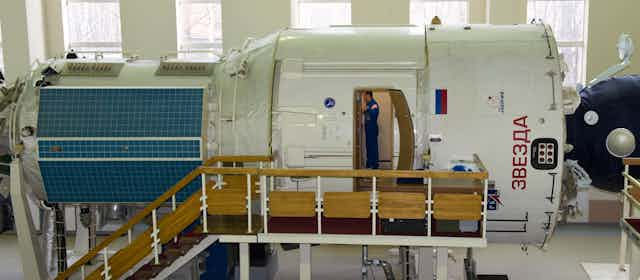Citing Russia’s “ongoing violations of Ukraine’s sovereign and territorial integrity,” NASA announced April 3 that it has cut all ties with the Russian Federation with the exception of the International Space Station (ISS).
Because Russia’s three-person Soyuz capsules are currently the only means of crewed access to low earth orbit, NASA has no alternative but to continue working with its counterpart, Roscosmos, to “maintain safe and continuous operation of the ISS”.
But with the ISS left out, there are hardly any programs affected by the policy change. There is actually little cooperation going on between NASA and the Russian government agencies besides the ISS partnership. This fact was not lost on Russian deputy prime minister Dmitry Rogozin (one of the Russian officials sanctioned by the Obama administration as punishment for their role in the Ukrainian situation) who for one did not seem much impressed. “Yet, apart from over the ISS we didn’t cooperate with NASA anyway,” he said in a tweet.
However, it would be wrong to think that the US decision to suspend NASA relations with Russian representatives on everything non-ISS related is not serious. As put by NASA astronaut Ron Garan: “In any crisis the worst thing we can do is stop talking.”
Take for instance the two-yearly International Committee for Space Research (COSPAR) meeting, which was set up in 1958 when the space age began. Through the Cold War, it was the one place where Soviet and Western space scientists could freely meet, irrespective of the political situation outside. But now NASA colleagues may not be able to attend because it is to be held in Moscow in August 2014.
These new restrictions, which are actually very similar to the ones that limit NASA’s interactions with China, could also have some retaliatory consequences. The likelihood of that happening is pretty low though, given that Roscosmos could not operate the station without NASA. The only worry is if Russia begins to lose interest in the ISS.
Such a scenario is not too far-fetched. One only needs to recall the geopolitical landscape in which the ISS was born. Beginning construction of the station meant Russia’s old Mir station needed to be deorbited. The painful memories of that are still vivid.
NASA’s recent decision was first revealed by a leaked email before being officially announced. The official response from NASA to the leaked memo seemed more like a message to the US Congress than to Russia. It said:
NASA is laser focused on a plan to return human spaceflight launches to American soil, and end our reliance on Russia to get into space. This has been a top priority of the Obama Administration’s for the past five years, and had our plan been fully funded, we would have returned American human spaceflight launches – and the jobs they support – back to the United States next year. With the reduced level of funding approved by Congress, we’re now looking at launching from US soil in 2017. The choice here is between fully funding the plan to bring space launches back to America or continuing to send millions of dollars to the Russians. It’s that simple. The Obama Administration chooses to invest in America – and we are hopeful that Congress will do the same.
Since the end of the Space Shuttle program, NASA has not had the capacity to get human into low earth orbit. But private companies such as Boeing, SpaceX and Orbital Sciences have been funded by Congress to produce a new generation of launch vehicle.
Despite going ahead with the funding, Congress has been notoriously sceptical about NASA’s commercial crew program. Many there appear to be sceptical about the need for several companies to be funded in this way.
This is why, unfortunately, by trying to hit both Russia and US Congress with the same weapon, NASA and the Obama administration might have missed the mark entirely.

